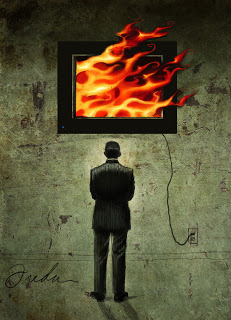 |
| Anthony Freda Art |
Nicholas West
Activist Post
It is always a good idea to prepare for reasonably common events such as natural disasters, large climate events like drought, and generally to be as self-sufficient as possible. The natural world, coupled with the insanity of global banksters, should get us all prepping in a hurry.
Doomsday is another matter entirely. As 2012 approaches, we have doomsday coming in every stripe: World War III, religious rapture, Mayan prophecies, Nibiru, alien intervention, and even a zombie apocalypse: you name it. People are prepping like never before and even building their doomsday bunkers to ride it out. And all the while Hollywood is right there either to be a reflection of our concerns that can be capitalized upon, or to give a lending hand to global management who would like us to behave a certain way when the inevitable doomsday does arrive — it’s a technique known as predictive programming.
No matter your view, the flurry of apocalyptic television programming and major motion pictures should get our attention, as we are being shown how “entertaining” the end of the world can be.
It is apparent from the trailer that the power grid has failed (and is perhaps an inside job) and that the real power is what survivors are struggling for. Revolution takes place 15 years after the apocalyptic event and we are shown a bleak landscape which appears to be like Road Warrior meets the Hunger Games.
Leave a comment
You must be logged in to post a comment.

Be the first to comment on "Apocalyptic TV: Art Imitating Life or Predictive Programming?"